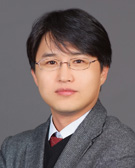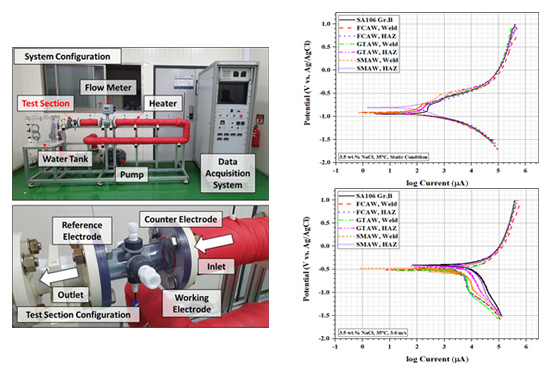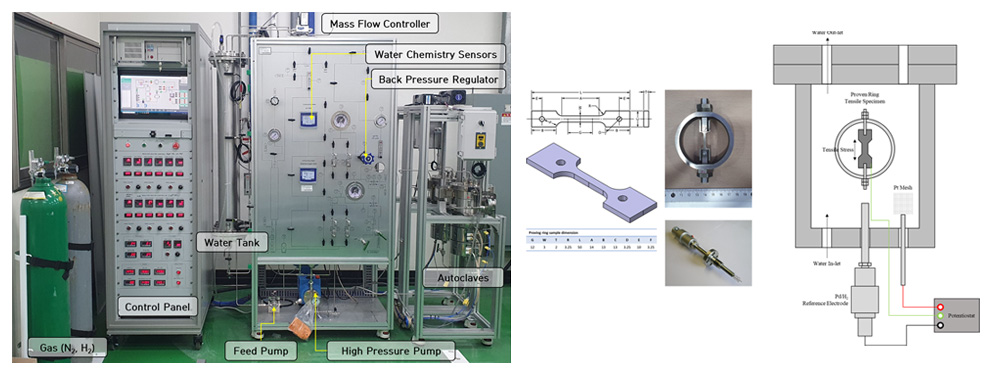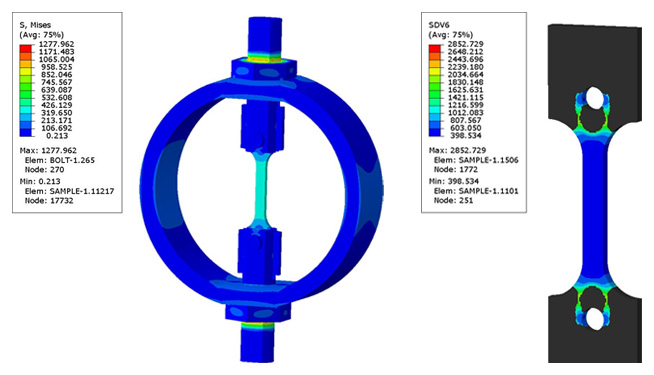Department of Joining Technology

- Head of Division
Song, Sang-woo
Department Introduction
Department of Joining Technology is performing the development of welding technologies and its suitability assessment for materials/parts/equipments to guarantee the safety and reliability of them. Our Major Research Areas is as follows: 1) welding and repair technology development for power plant and transport equipment 2) weld property evaluation 3) finite element analysis related to weld residual stress, deformation, and microstructure, 4) weld failure analysis 5) consulting and technical support.
Major Activities
- Development of multi-metallic layer materials manufacturing equipment for small modular reactor (SMR)
- Evaluation technology development of static and dynamic chloride-induced stress corrosion cracking (CISCC) for spent nuclear fuel dry storage canisters
- Development of repair technology for safety-class large bore piping in in-service nuclear power plant
- Development of primary water stress-corrosion cracking (PWSCC) experimental demonstration system
Major Research Area
- Development of multi-metallic layer materials for multi-purpose micro modular reactor (MMR)
- Evaluation technology development of static and dynamic CISCC for spent nuclear fuel dry storage canisters
- Development and verification of surface stress improvement system for mitigation of components in nuclear power plants
- Development of repair technology for safety-class large bore piping in in-service nuclear power plant
- Development of regulatory technology for weld integrity and repair weld safety in reactor component
- Development of smart welding system for re-manufacturing of worn-out railway wheels
- Development of adaptation technology of cryogenic insulation materials to the liquid hydrogen fuel tank
- Development of risk-informed safety case and performance assessment methodology for spent nuclear fuel
- Design of equipment for long-term storage of spent nuclear fuel to demonstrate the deterioration characteristics of major materials
- Development of welding materials and welding technology for manufacturing spent nuclear fuel transport and storage containers
Future Research Plan
- Computational analysis and verification on residual stress in welded joint
- Development of material repair technology for hydrogen-gas turbine
- Development of PM/HIP material weldability evaluation technology for SMR
Major R&D Activities
Development of repair technology for safety-class large bore piping in in-service nuclear power plant
[Introduction]
- Due to the increase in number of operating years of domestic nuclear power plants, thickness reduction, erosion, and corrosion of safety-class large diameter pipe are occurring, and the demand of repair/replacement for damaged area is also increasing. To improve the public reliability for in-service nuclear power plant, and to reduce the cost loss and supply of stable electricity by shortening the shutdown period, research was conducted to develop and optimize customized repair technology for damaged parts of large diameter pipe.
[Contents and Results]
- Establishment of evaluation system for durability of carbon fiber reinforced polymer (CFRP) repair area
- Evaluation of electrochemical corrosion characteristics and microstructure analysis of metal repair area
- Analysis of long term aging characteristics for non-metallic repair area
- Evaluation of weld/HAZ of metal exposed to seawater environment


Development and Verification of Surface Stress Improvement System for Mitigation of Class 1 Components in Nuclear Power Plants
[Introduction]
- Primary water stress corrosion cracking (PWSCC), occurred at pressure boundary of pressurized water reactor, is a degradation phenomena where sensitized material, tensile residual stress, and high-temperature and pressure environment exist. As power plants become aging, trip and maintenance of the plants have been reported in both domestic and oversea. Therefore, laser peening and ultra-nano surface modification techniques have been exploited and their experimental and computational investigation have been conducted in this project to improve material and structural integrity of the power plants.
[Contents and Results]
- Experimental demonstration of PWSCC behavior of surface-modified material
- Computational investigation of PWSCC behavior of surface modified materials and development of its method


